Keep Up to Date with MDG
MDG News and Updates
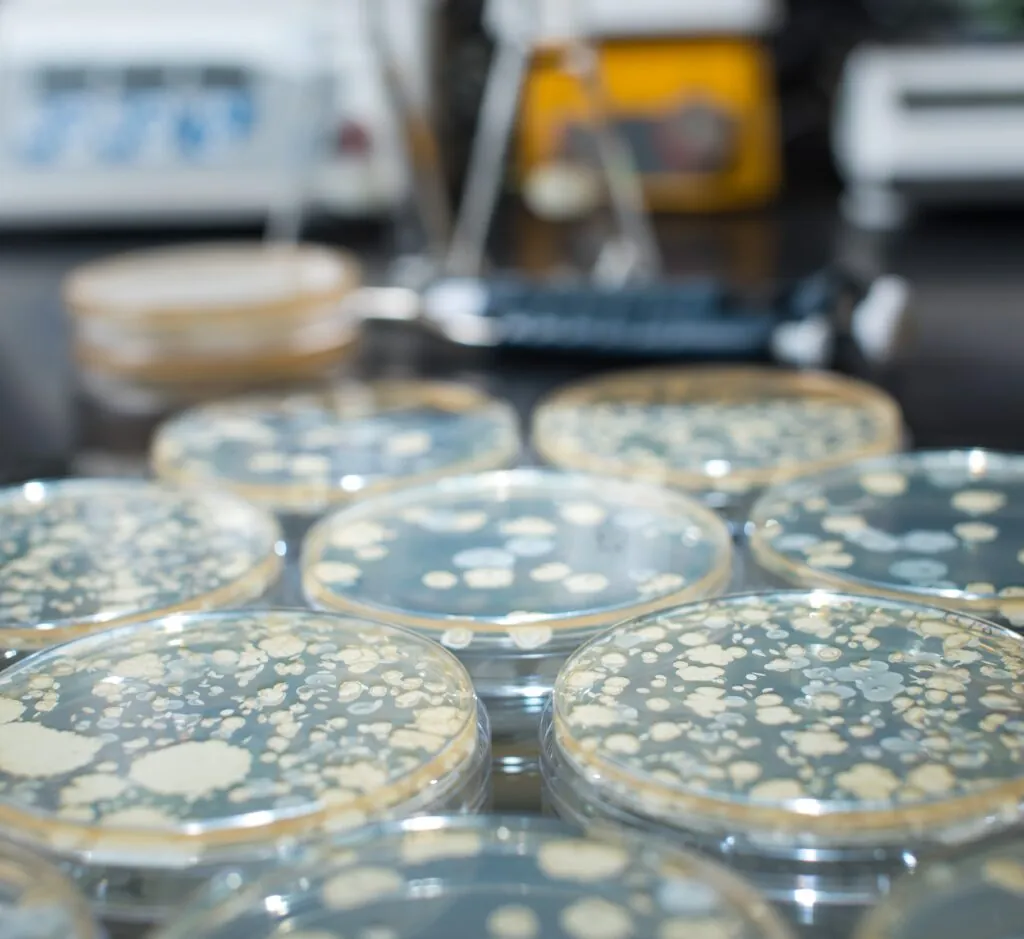
Bacillus Adaptation for the Utilization of Common I&I Odor Compounds
Bacillus are capable of using many types of organic material as a source of energy, and they are very good at adapting their metabolic processes to use whatever energy source is nearby. When sufficient nutrients are available, Bacillus will continually multiply. This is known as exponential growth. Figure 1. Growth of Bacillus when one energy source is available They will continue to grow until their preferred food source is exhausted. Then they will change their metabolic machinery and start using a different food source. During this metabolic shift, there will be a brief pause in growth while the Bacillus make the necessary changes; such as producing different enzymes. After this pause, exponential growth will resume. This process will repeat until all available nutrients have been exhausted. This characteristic of Bacillus makes it a sought-after ingredient in Industrial and Institutional products as Bacillus will continue to work until it has adapted to and utilized all available wastes. Figure 2. Growth of Bacillus when multiple volatile fatty acids are available Bacillus’ ability to grow exponentially in the presence of a food source was demonstrated in the following in-house study. This study measured SporActiv® Bacillus utilization of odor causing volatile fatty acids (VFAs). When one food source was available, Bacillus grew exponentially until that food source was depleted (Figure […]
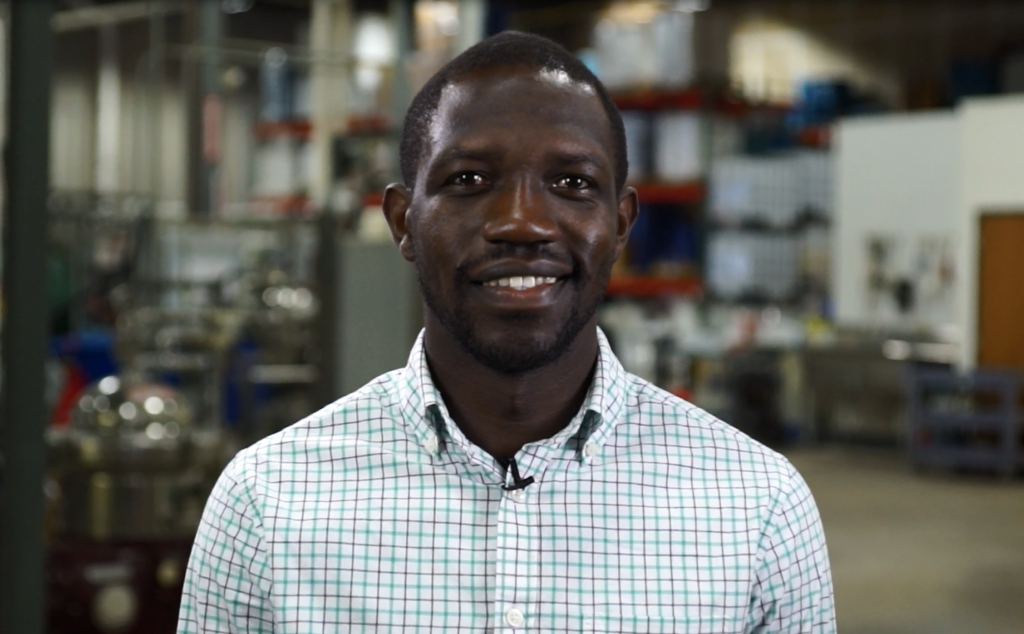
Under the Microscope: Dominic Androga, Director of Bioprocess Development
As the leader of our Process Development Team, Dominic oversees the strain optimization and fermentation scale-up process. Since joining our team in 2015, he has also played a vital role in our expansion project to increase manufacturing capacity. 1. What drew you to Microbial Discovery Group? I’ve always been fascinated by the synergy between biology and engineering. While in college, I worked on various projects that involved use of microorganisms to make products for different applications – as feed source and for energy production. These experiences inspired me to follow this path professionally. MDG’s mission to “Feed, Clean and Save” the world greatly aligns with my personal and professional interests. All in all, it was the opportunity to research, develop, and apply products that make an impact on people’s lives that ultimately drew me to MDG. 2. What does your typical day look like? My day varies quite a bit. I work closely with teams from Process Development, Production, QC, and R&D to monitor day-to-day processes and activities in the lab as well as on the production floor. On a typical day, we may have meetings to review results from recent batch runs where we troubleshoot and determine cause and […]
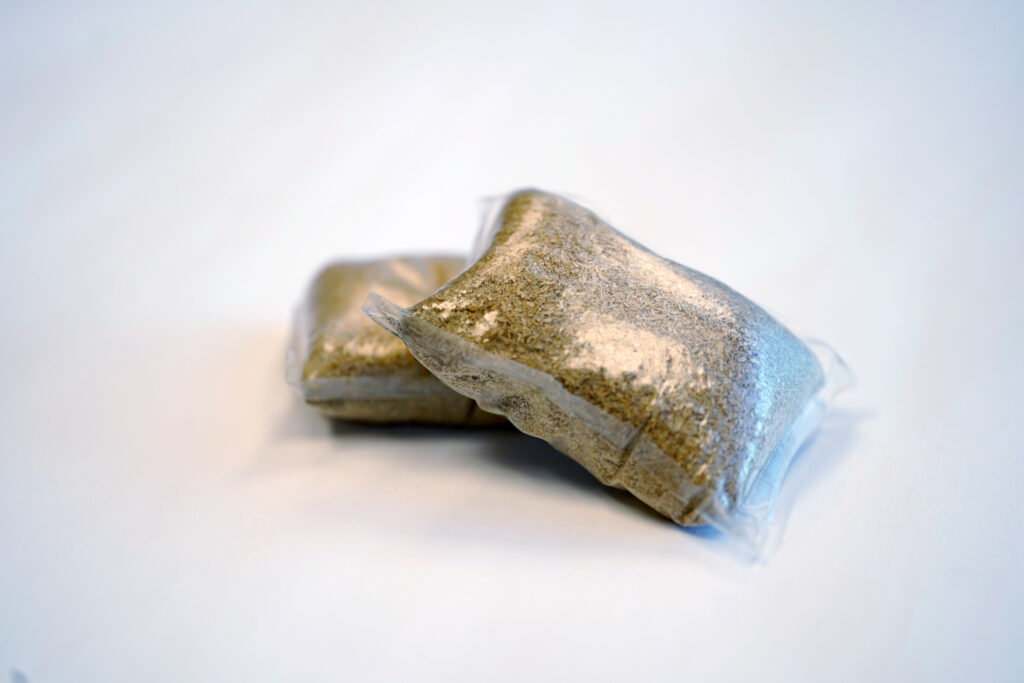
Reduction of Ammonia by SporActiv™ Bacillus
When organic waste breaks down, it can generate ammonia, which is a toxic substance that produces a foul, sharp odor. In the Industrial and Institutional (I&I) market, your customers walk past ammonia-causing matter daily, such as food, animal and human waste. These same wastes contain materials that are rich in nitrogen. As the waste decomposes, the nitrogen is converted to ammonia, causing an unpleasant odor. But, without nitrogen, there’s no ammonia… and that’s where Bacillus come into play. All living organisms need a source of nitrogen to support life, including Bacillus. Bacillus strains can utilize the nitrogen in ammonia for bacterial growth. In order to get the nitrogen, Bacillus digest the available ammonia, removing it from the environment and preventing odor. RESULTS In the case of our SporActiv™ products, we specifically selected strains of Bacillus that have high ammonia utilizing capabilities. The more ammonia that is utilized by the Bacillus means less complaints and foul smells. At MDG, a study was conducted to measure the growth of SporActiv™ Foundation in the presence of ammonia. When ammonia was present, there was more bacterial growth, indicating the Bacillus were able to utilize the ammonia nitrogen to support growth (Figure 1). When choosing a Bacillus product, you should also keep in mind that not all Bacillus are able to utilize ammonia at […]

Case Studies: Seeing is Believing
We’ve heard it time and time again, “Does this stuff really work”? This sparked an idea. Why don’t we help our partners eliminate any doubt upfront by sharing in-field results? Better yet, let’s demonstrate how easy it can be for them to create their own. After all, seeing is believing! Through years of successful treatment and having now created 40+ case studies, our distribution partners have proven that these studies are the best tool for creating new believers in bioaugmentation. Because of this, we focus a big part of our training around taking key measurements in the field so that the creation of these case studies is possible. Our team of experts are hands-on in and the field with our partners, demonstrating when and how to properly gather data. As a result, partners can quickly and easily create case studies of their very own. Here are just some of the many benefits we’ve seen from building in a results-driven approach with our partners: Working hands-on in the field accelerates learning for our new distribution partners. Seeing is believing! Case studies validate that bioaugmentation products truly work. Having proof of this creates a strong marketing tool for future business. When our partners demonstrate measurable success […]

Under the Microscope: R&D Group Leader, Jessica Edward
Jessica Edward leads a variety of different initiatives within our research and development lab. She has been a key player in implementing new technologies as well as in product and platform development for our customers. 1. What drew you to Microbial Discovery Group? From the very beginning, I was drawn to the small company culture and the strong visions for growth. We are a team that collaborates well together – something I really admire in an organization. I am also encouraged to take on responsibilities that promote both my professional development and personal growth. I could tell from the very start that MDG was investing in me, which makes it easy to put forth the hard work for them. 2. What does your typical day look like? Typical days do not exist, haha. On any given day, I could be running a handful of laboratory tests, catching up on paperwork, researching new methodologies, pulled into an important meeting, emailing with customers as I answer their questions, or really anything that pops up. 3. What are you working on right now? As one of the team leads in our R&D department, I work on a variety of different projects. Lately, […]

Under the Microscope: Production Manager, Ed Tomassetti
Under the Microscope is Production Manager, Ed Tomassetti. Heading the team at our Oak Creek facility, Ed oversees the blending, packaging, and shipping aspects of our business. 1. What drew you to Microbial Discovery Group? I was looking for a company that offered a meaningful product/service and cared as much about its employees as financial success. I found that company in Microbial Discovery Group. 2. What does your typical day look like? I start every day in a production meeting with my team where we set daily goals and discuss issues that need attention. Afterward, I create product blend formulations for customer orders and inventory replenishment. After a little management, I usually review strain inventory to confirm that our fermentation tank schedule will provide strains in the needed order. Afternoons are typically filled with confirming that the day’s shipments have been picked up, answering emails, making phone calls, and purchasing needed materials/packaging. Did I mention lunch? I always manage to squeeze in a little lunch 🙂 3. What are you working on right now? I’m currently focused heavily on strain, finished product, and ingredient/packaging inventories. I enjoy looking for ways to improve our accuracy and ensure we manage our inventory […]
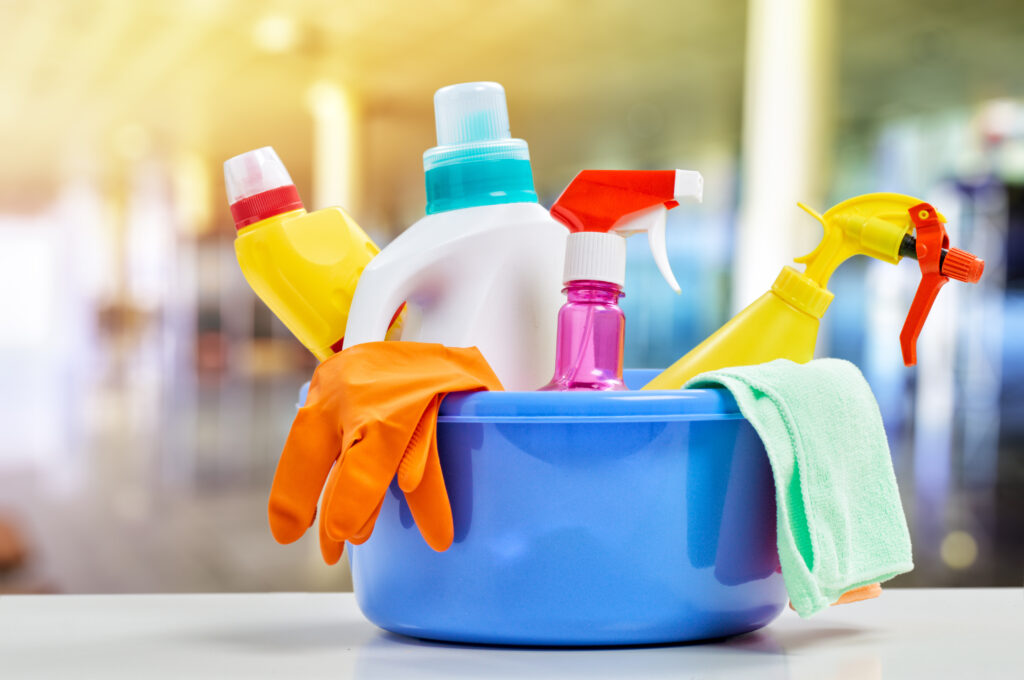
Microbial Discovery Group Kicks Off 2019 with a New Product Line for the Industrial and Institutional Cleaning Market
Microbial Discovery Group (MDG), a leading Bacillus fermentation company, announced their newest product line, SporActiv™, for the industrial and institutional cleaning market. MDG’s SporActiv liquid and powder product line contains safe ingredients that enhance a variety of residential and commercial cleaning needs. Applications include odor control, floor and tile cleaners, carpets, drains, portable restroom cleaning and more. As the market trends towards environmentally friendly and natural products, biological cleaning solutions will become increasingly prevalent. SporActiv is designed to stay ahead of this trend, bringing a full product line enhanced with both classroom and lab support services. MDG’s customer package includes training materials, lab data, research and more. “We wanted to create an offering that made it easy for our partners to do business while both meeting and exceeding cleaning manufacturer’s needs.” said Jenna Trusso, Marketing and Business Development. “In order to do that we knew we had to deliver a powerful cleaning ingredient while providing our partners with the speed and support they’ve been missing.” Built upon MDG’s extensive Bacillus library, the SporActiv Product Line includes a variety of different concentrations and bacterial counts. SporActiv also features a two-day shipping line, liquid and powder products, and water-soluble packages making it easy to incorporate the […]
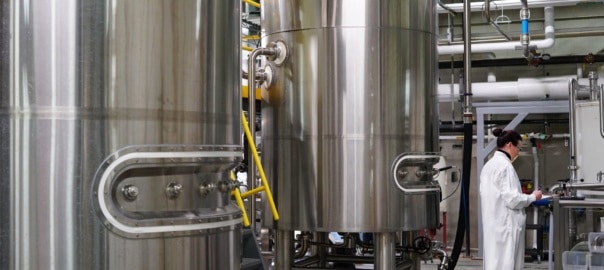
Microbial Discovery Group Obtains HACCP Food Ingredient Certification
Microbial Discovery Group LLC (MDG) has expanded their HACCP scope which now includes food (human) ingredient. This has been part of their strategic plan and an important milestone in increasing their Bacillus fermentation capabilities. Having a Food Safety Plan and certification creates custom fermentation opportunities for MDG within the $44 Billion human probiotic market. This plan is a vital part of HACCP and the Food Safety Modernization Act and is a complementary piece to MDG’s recent fermentation facility expansion. “We’re excited to add food ingredient to our HACCP approved scope. This couldn’t have come at a better time, as we’re seeing the market space rapidly growing. What other market segments, such as plant and animal have seen over the past two decades is now being realized by the food industry for human consumption. If the trends hold true, we could see the human segment go from a 1% market penetration to well over 50% in a relatively short period of time. The other exciting thing is it offers our current and potential new customers a sense of comfort and peace knowing that the strains that they are purchasing are pure and are grown and monitored within a strict HACCP Program,” said MDG’s Business Development […]
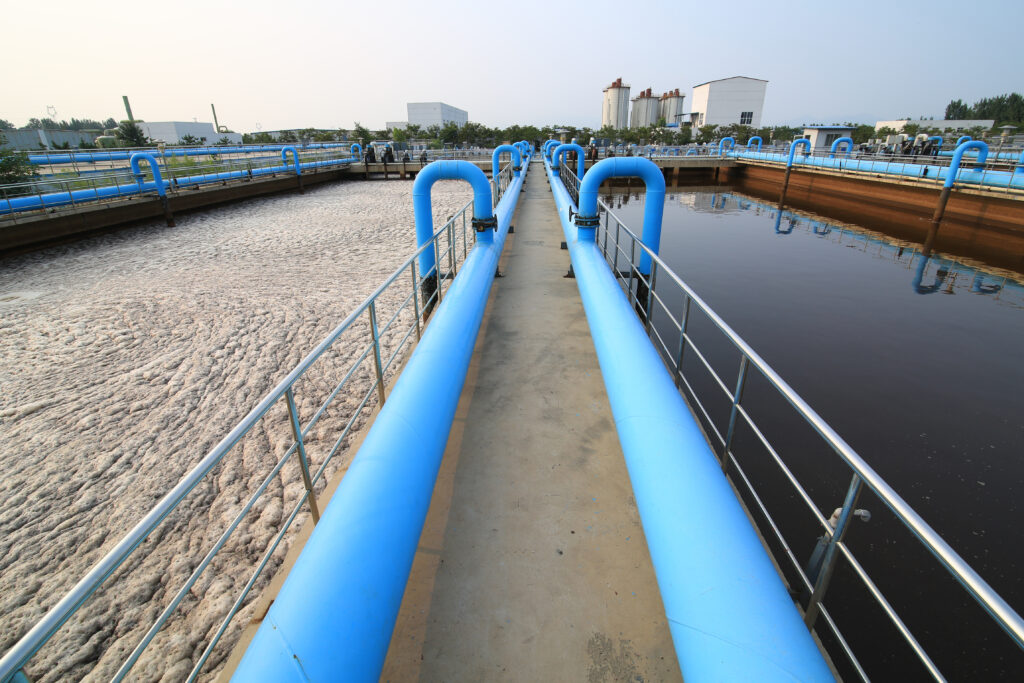
Wastewater Treatment Mistakes You’ll Never Make Again
When selling microbial products and programs, you’ll inevitably encounter a customer that says, “I’ve tried something like that before and it didn’t work”. This kind of experience often links back to one of four common mistakes that were made prior to or during treatment. In this guide, we’ll go over these mistakes and how you as a distributor can avoid making them by choosing a microbial solution and partner that gives you the tools you need to make confident and accurate recommendations. PREVENTION: Biotifx® gives you opportunity-specific Application Guides that show you how to apply the product step-by-step. Additionally, Biotifx® gives you a System Survey Tool and Dosing Calculator that make it extremely easy to avoid incorrect application. PREVENTION: With the Biotifx® Survey Form and ROI Calculators, you can calculate an accurate value assessment for each of your customers. The program also comes with Proposal Templates that help you highlight obtainable results with real value to your customers. PREVENTION: Our Biotifix® Qualification Guide and step-by-step System Survey make it easy for you to find the right high-value opportunities for your customers. PREVENTION: Correctly measuring and documenting success is key to customer confidence. Biotifx® comes with […]

SporActiv® Water-Soluble Film: Makes Treatment Easy and Safe
As more and more people are working remotely, their sewage and septic systems are being put to the test. We’ve written recent articles highlighting the potential for backups and the various items that shouldn’t be making their ways into your septic tank. Good news, we’ve also touched on the strength of biological treatments. MDG manufactures pre-measured and easy-to-use septic tank pouches that work hard well after application to continue fighting potential back-ups. SporActiv® SepticPacs are pre-measured water-soluble packages created specifically for use in septic systems. To dose, it’s as simple as flushing the toilet. When first picking up these packs, you may be curious about the material. In your hands, it may feel similar to plastic, but fear not! The water-soluble packs are made of polyvinyl alcohol (PVA) film. When this film hits the water, it dissolves and the material becomes readily digestible by the SporActiv® microbes in the septic system. You may already be familiar with polyvinyl alcohol film as it has been used for many years to package detergents in “pods”. The same convenience of laundry and dishwasher pods is now available for septic treatment: no measuring, no spills, no fear of incorrect dosing. Every SporActiv® SepticPac delivers roughly 75 billion waste-degrading […]